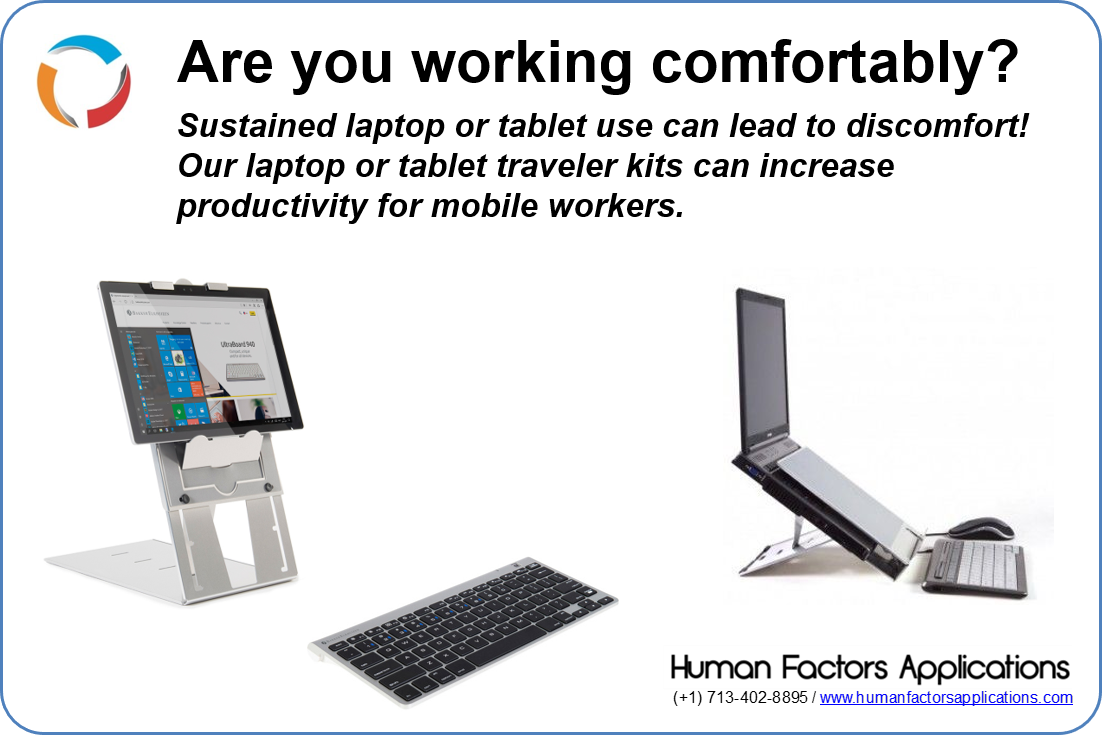Hearts and Minds - Improving Safety Culture with Trusted Tools and Methods
https://www.flipsnack.com/my-flipbooks/details/39677593
Read Morehttps://www.flipsnack.com/my-flipbooks/details/39677593
Read More“Elegant” is not a term used by all engineers (or ergonomists) when referring to peoples’ workstations. However, on a recent post our key equipment supplier revealed that a very elegant item is their number 1-selling product.
The Flexdesk 640 seems expensive at $159.99, but it is beautifully made - transparent plastic with a satisfying magnetic catch. It has a large writing surface that unlocks with just the right resistance, to bring your paperwork close to you. This surface moves to cover your keyboard, and uncovers the hidden storage slot..
This system brings your working area into alignment, avoiding twisting or hunching over when working on paper. It also extends the real estate available at your workstation and complements the company’s clear monitor risers.
Check out the product and others on our products page.
Human actions or inaction can contribute to major accident hazards. Barrier management refers to the process of ensuring that controls against losses are in-place and functional (per https://www.ergonomicsblog.uk/barrier-management/).
Bowtie analysis is a useful diagrammatic method for visualizing and analyzing the risks associated with major accident and other undesirable events.
The white paper at the above link applies the famous Swiss Cheese model of accident causation, and demonstrates the barriers in place against losses. A distinction between controls (risk reduction measures in-place) and safeguards (the human actions that support the barriers). Making these definitions helps to evaluate and improve the human contributions to preventing and reducing the consequences of major accident events.
An answer to the question, “what do you want to be when you grow up”.
Read MoreA summary of applying human factors engineering on projects using specifications and design reviews.
Read MoreArticle on the use of keyboard shortcuts to increase productivity.
Read MoreDelivering training for human factors engineering on projects - based on real-world experience.
Read MoreAre you working comfortably? Tools and software is available to deliver productivity gains in the modern workplaces.
Read MoreThe Rule of Three - Applying Situational Awareness for Hazard Management
Read MoreThis recent (2016) article on sit-stand workstations (“Call Center Productivity Over 6 Months Following a Standing Desk Intervention” by Garrett et al, 2016) suggests that sit-stand desks bring about significant performance improvement - up to 45% over seated workers, but the study has some real limitations. Participants were not randomly assigned to traditional vs sit-stand groups, and no before: after performance data was presented. These limitations are acknowledged by the authors, and make it difficult to show that the sit-stand workstations are associated with the increase in performance.
However, two findings from the data are more robust; self-reported seated time for those with sit-stand workstations averaged 72%–73% of their working day, compared with 91% of those without sit-stand (Pickens et al., 2016), and after six months months, nearly three quarters of those with sit-stand workstations reported a decrease in body discomfort.
This study shows that there is merit in providing stand-capable workstations. Moving around throughout the day has been shown to be associated with improved health and productivity outcomes. Another recent study - this one a year-long study of healthcare workers, led by researchers at Loughborough University - did demonstrate reduced sitting time among the group who were assigned sit-stand desks, and indicated they were less tired and more engaged. This was achieved by providing workers with new desks and instructing them how to use them.
Contact us to find out how Human Factors Applications can assist you with office ergonomics improvements.

Applying ergonomics offshore
Read MoreModern working practices involve versatile working arrangements - and poor working postures are common. A laptop traveler kit (separate mouse and keyboard, and laptop stand) can really improve workers' posture, reducing discomfort and injury risk, contributing to productivity over the long term.

Recent work has been in the pharmaceutical and medical industry for projects on behalf of major blue chip clients and startup companies. An example of applying human factors in a medical context is shown below.